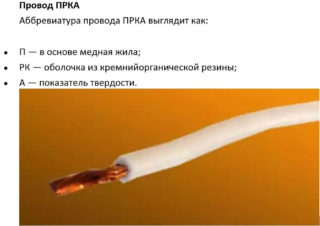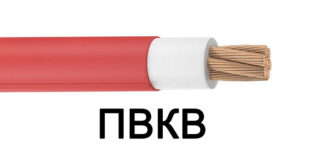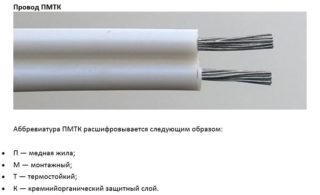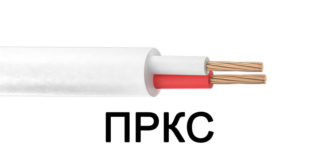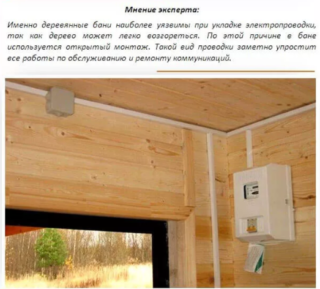Any rooms with high humidity require a special approach to wiring. This is especially true for saunas and baths. Moisture and high temperatures can cause serious accidents. To prevent this from happening, during the construction of such facilities, a special heat-resistant wire for a bath is used.
What is heat resistant cable
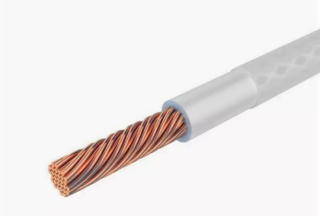
The masters call a heat-resistant wire a separate type of cable products. It is characterized by increased resistance to high levels of humidity under conditions of regular high temperatures.
The peculiarity of such a cable is that it has an additional protective sheath made of non-combustible materials. These cables are used at facilities with extremely high temperatures: hot shops, saunas, baths, bakeries, etc.
There are several types of heat-resistant wires for the sauna. They all differ in the range of withstand temperatures. Each of them has its own special labeling.
Types of heat-resistant cable
One of the main conditions for the safe installation of electrical wiring in rooms with high temperatures and humidity is the thermal stability of the electrical wiring. But here it is important to understand that a sauna or bath has two categories of premises:
- with a standard temperature regime: hall, recreation room, room with a swimming pool;
- steam room: room with high Celsius readings.
For standard premises, it is allowed to use such types of cables as AVVG, VVG, NYM or PVS. Their braiding consists of PVC, XLPE or other insulating materials. Such wires can be laid in a hidden or open way. The main thing is that they are carefully insulated along their entire length.
It is advisable to use a special polymer (but not metal) corrugation as an additional protective channel for wires.
Steam room cable
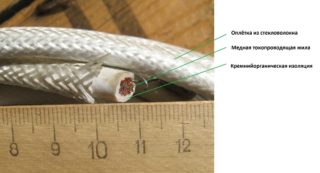
In rooms with constantly or regularly high temperatures, only heat-resistant wire is used for a sauna, a bath. If you do not adhere to this recommendation, the sheath of a regular cable will melt as the degrees rise in the room. In this case, fire is not excluded. You can use one of the several types of cable below to install an electrician in a steam room.
RCGM
Product marking is deciphered as "silicone rubber + bare copper core". The main advantages of such a wire:
- does not support combustion;
- inert to regular drops in blood pressure;
- resistant to mold formation;
- withstands not only vibrations, but also mechanical stress;
- inert to solar radiation, radiation.
This type of cable can be operated at a humidity of 100% and a maximum temperature of up to +180 degrees.
PRKA
- P - wire with copper conductive core;
- RK - silicone rubber (upper braid);
- A - increased hardness.
Advantages of the named wire for a bath:
- inertness to combustion;
- no halogens in the braid;
- resistance to radiation, ultraviolet light, mold;
- increased flexibility.
The PRKA cable is allowed to operate at a humidity level of 98% and a maximum temperature of up to +180 degrees.
PVKV
- P - wire;
- B - output of electric machines;
- KV - two-layer silicone rubber as a braid.
Such a cable is used with a winding outlet of the class "H".
The main advantages of the wire:
- increased flexibility (up to 20 position change cycles);
- resistance to atmospheric pressure drops;
- inertia to vibrations, mechanical stress;
- does not support melting or burning.
The maximum allowable operating temperature is +180 degrees.
PAL

The marking is deciphered as follows:
- P - wire;
- A - asbestos sheath;
- L - varnish coating.
Features of PAL cable:
- toxic safety under the condition of operation from -50 to +200 degrees (when the temperature rises, the varnish releases toxic fumes);
- the ability to withstand indicators up to +300 degrees Celsius for about 3,000 hours;
- inertness to the effects of technical toluene, gasoline, organosilicon varnish.
PAL can withstand up to 20 free bending cycles without breaking the integrity of the conductor and insulation.
PNBS
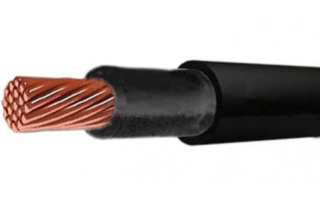
The marking is interpreted as "fixed wire for a bath, sauna". This cable is used specifically for electricians for heating furnaces, heating equipment operating at constantly high temperatures in the room. The product is ideal for hot, humid environments.
Wire for sauna and bath PNBS has the following technical characteristics:
- permissible temperature limit - up to +150 degrees;
- presence of copper conductive cores with organosilicon rubber braid;
- fluorosiloxane rubber sheath;
- the ability to directly connect the cable to heating equipment.
The operation of this wire in saunas and baths is regulated by the PUE.
PMTK
The cable has a stranded copper conductor. Products of this type can be used in rooms with a maximum Celsius value of up to +200 at a maximum humidity of 100%. When single-laid, the cable sheath is self-extinguishing.
PRKS
Norms and requirements for wiring in the bath
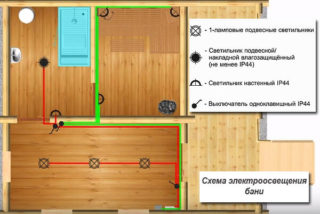
The fire safety rules regulate special standards for the installation of electricians in rooms with high levels of humidity and temperatures. You need to rely on the following requirements:
- Be sure to install automatic blockers when performing installation work to protect the power lines.
- It is important to provide for a potential equalization system (PFC).
- All wiring is laid with TN-C-S earthing. If these conditions cannot be met for technical reasons, the power supply is carried out using a pressure reducing transformer.
- All wires are laid only vertically or horizontally. Diagonal channels or grooves are not allowed. Turns are made only 90 degrees.
- The switchboard is mounted as close as possible to the entry point of the lead-in cable for the sauna.
- The cable is pulled in whole cuts. The options for installing the line in separate pieces with unnecessary connections are excluded. Joints are only allowed in special junction boxes.
- Horizontal grooves or channels are laid 10-20 cm from the ceiling and floor.
- The cable is removed from windows and doors by 10-15 cm.
- The switches are mounted 30 cm from the sockets and 1 meter from the floor.
- From any metal devices (batteries, electric radiators), the wires are removed at least 50 cm.
- The power points must be located 60 cm from the shower stall.
- All luminaires must be sealed. The optimal power of the bulbs is 60 watts.
- It is forbidden to mount open power points (sockets, switches) directly in a steam room, shower room or in a room with a pool.
Compliance with these rules insures the owner of the sauna and its visitors from injuries and fires.
As a rule, standard household appliances are used in the sauna: a hairdryer, a kettle, a stereo system, lighting points, as well as electric heating devices: radiators, ovens for a steam room. Therefore, it is advisable to make the optimum voltage for the sauna 10 kW. If the bath does not have electric heating and heating equipment for the steam room, you can limit yourself to a 220 W network from home.
Cable routing methods
- Air. This method of cable routing along the street is relatively cheap, high speed of the process and moderate labor intensity.
- Underground. Here you will have to spend more effort, time and money on the device of the power supply line. But the underground connection method guarantees the safety of the cable from mechanical stress, vandals, etc.
A power cable is preliminarily brought to the building box.
Wiring through the building itself can be laid open or closed. This is permitted by the standards. In the first case, it is relevant to perform retro posting in the bath. This is a cable stretched over the interior walls with special fasteners.
Before starting installation work, it is imperative to draw up a wiring diagram.
Common mistakes when selecting wires
The main flaws when choosing a wire for a humid hot room:
- purchase of a regular cable for laying in a steam room instead of a heat-resistant one;
- incorrect cross-section of the supply wire required for an electric oven.
If these errors are avoided, all work on the electrical device is considered completed correctly and in accordance with GOST.

